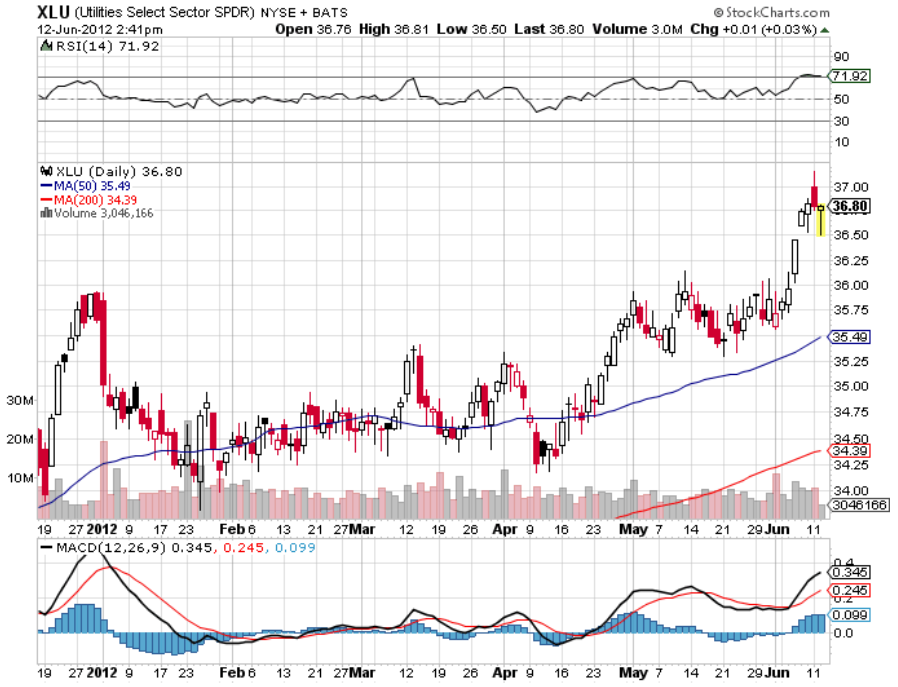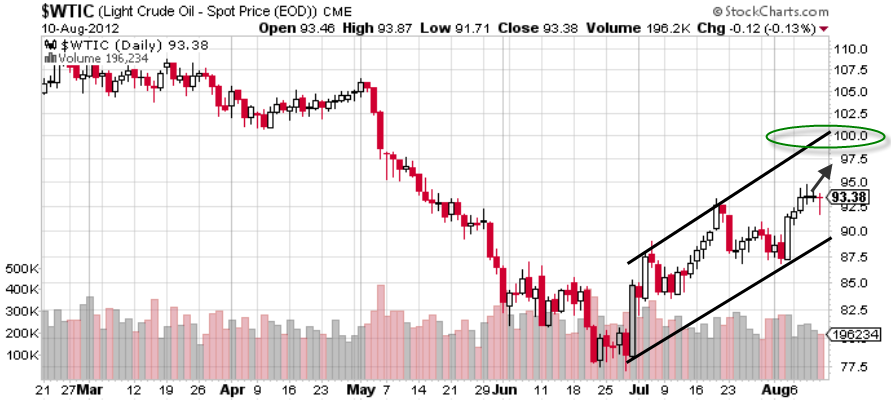U.S. consumers are finally getting a boost and that could be upbeat news for major American retailers.
Household sentiment has climbed to the highest level since July 2007 and consumer spending in the third quarter advanced at a 2.2% annualized rate.
The plunge in gas prices, plus an economy that generated more than 300,000 jobs in November, help explain the festive move.

That, in turn, has lit a fire under some retail and consumer discretionary stocks.
Here’s an overview of the sector:
Macy’s
Macy’s (M) is the largest department store chain in the U.S. and has been cutting expenses and buying back shares aggressively.
This may suggest the retail is well-positioned to capture an increase in consumer spending in the fourth quarter and 2015.
Earnings per share up is 15 percent year-to-date.
Macy’s earnings have started to benefit from the integration of its acquisitions, including Federated Department Stores, back in 2010.
Some 71% of analysts tracked by Bloomberg have a buy recommendation on Macy’s, compared with just 38% for Nordstrom (JWN).
The Gap
This portfolio of brands that includes the Gap (GPS), Old Navy, Banana Republic, Piperlime, Athleta and Intermix names is getting a second look with the arrival of new CEO Art Peck.
Its third quarter earnings topped Wall Street expectations on lower operational expenses.
Another surprise: the retailer reported a 6% rise in November same-store sales, besting the 1.4% decline expected by analysts surveyed by Thomson Reuters.
True, this company has a long way to go to win back its cachet and consumers it lost during the mid-2000s as its brands faded.
Yet a number of analysts have shifted their outlooks for the company after Peck’s arrival.
The stock hasn’t done much over the last year, but that could change if the retailer keeps delivering on sales growth.
Costco
In the U.S., the warehouse retail has been a steady performer over the last four years with average annual revenue growth of 5%.
Costco (COST) should benefit even more from the rebound in American consumer spending.
On top of that, Costco is also a promising global retail play. Its international revenue is growth 15% annually.
Costco’s biggest overseas market is Mexico. But it’s also expanding into Asia and Australia.
Five years ago between 75 percent and 80 percent of the company’s new stores were in the U.S.
Over the next three or four years, 60% of new openings will be overseas, the company has said.
Bed Bath & Beyond
In recent years, the company’s (BBBY)namesake flagship chain, as well as other brands such as Buybuy Baby and Cost Plus World Market, has not been investor favorite.
E-commerce competition from Amazon.com (AMZN) has been brutal.
However, a $2 billion share buyback plan has changed sentiment somewhat.
The stock has bounced back from mid-year lows. However, it will take a sustained outperformance in earnings and revenue to really mark a comeback.
Wal-Mart
The world’s largest retailer (WMT) was the the biggest gainer in the blue-chip Dow Jones Average index in November, up 15%.
The company’s third quarter earnings topped Wall Street expectations.
And few retailers can match the retailer’s scale, which means Wal-Mart can command big discounts from suppliers.
If there’s a sustained recovery in U.S. consumer spending, Wal-Mart is going to benefit.
High risk plays
Of course, some retailers face headwinds so severe that it’s hard to see better days even as the U.S. economy improves.
That said, the upside is potentially pretty big.
Most analysts suggest steering clear of Sears Holdings (SHLD) and RadioShack (RSH).
J.C. Penney (JCP) is also considered a risky bet.
However, back in May, Covestor manager Libardo Lambrano, who oversees the Dividend Paying Large Caps portfolio, sketched out an interesting contrarian case for J.C. Penney.
The retailer is working toward recovery, according to Lambrano, that have historically been successful for other companies in similar situations.
He likes the way management is renegotiating debt, cutting expenses, stopping dividends, and increasing productivity.
He continues to hold a position in the retailer.
DISCLAIMER: The investments discussed are held in client accounts as of November 30, 2014. These investments may or may not be currently held in client accounts. The reader should not assume that any investments identified were or will be profitable or that any investment recommendations or investment decisions we make in the future will be profitable. Past performance is no guarantee of future results.




